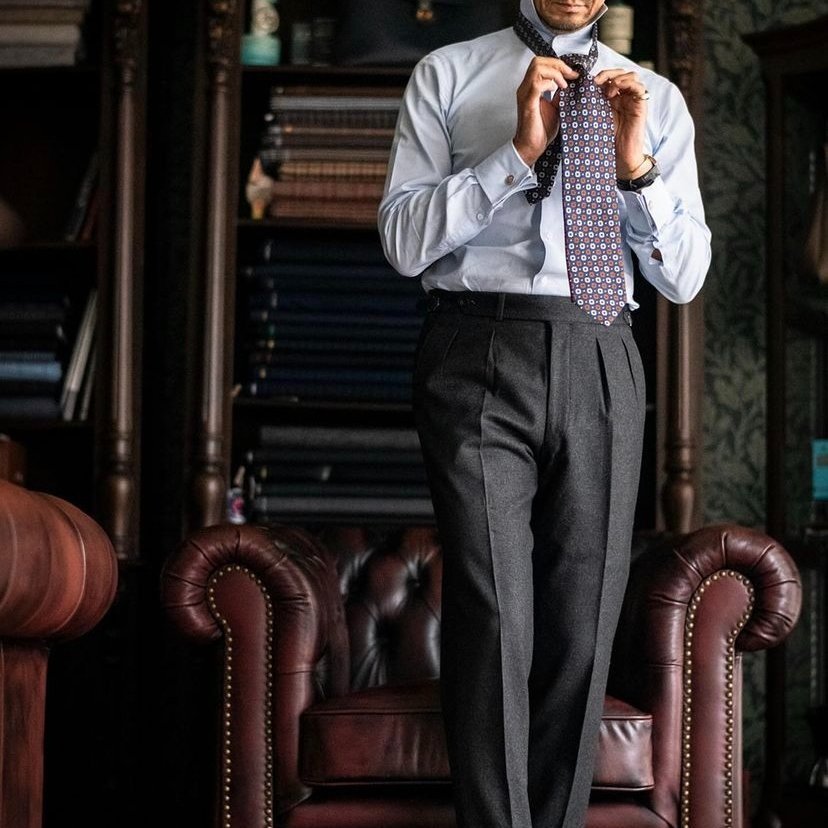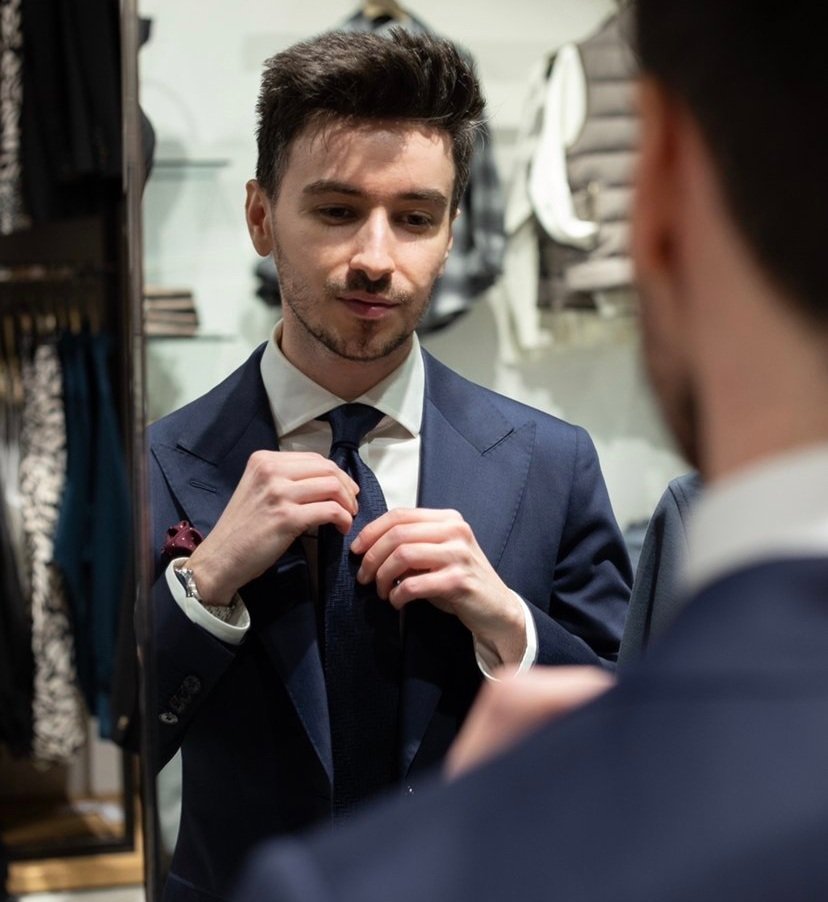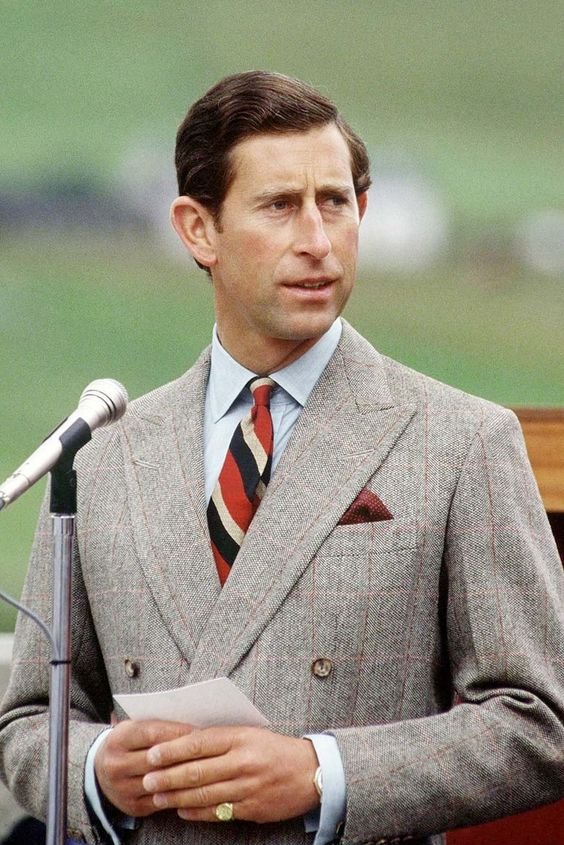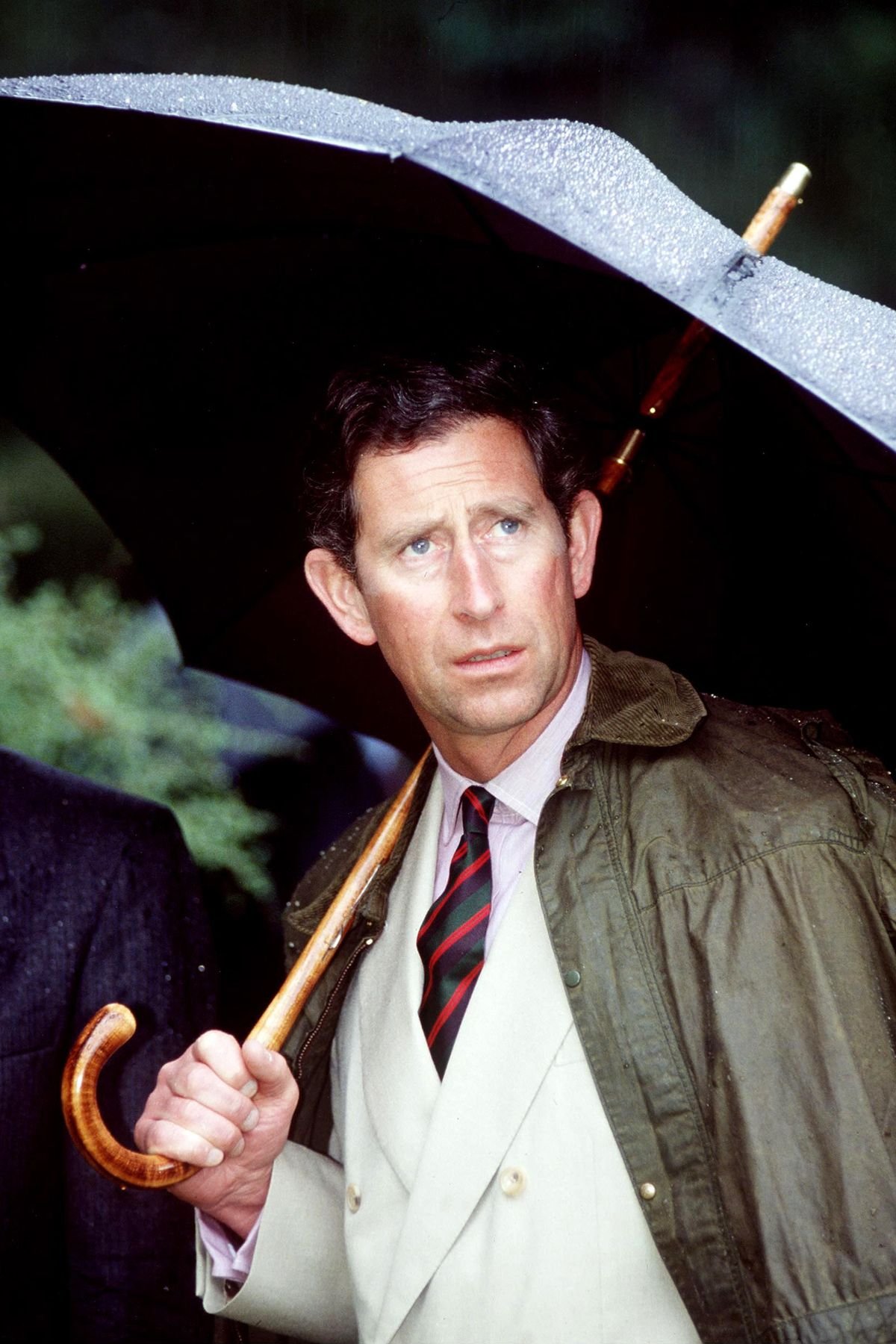When Should I Wear A Tie?
When even London's most luxuriate finance bros are dispensing with the tie, it then feels a little odd for anyone else to wear one, does it not?
Owing to the ongoing obituaries of the tie that never fully reach their conclusion, you might think that wearing a tie is obsolete and one needn't bother. Actually, we still wear ties, but the occasions that call for them are less clear than they were in the days when donning some silk neckwear was considered basically gentlemanly conduct. Whether you were down the bank or down the pits – you wore a tie. However, it is not 1913 anymore.
So, when should you wear a tie? The intention of this article is to provide a short summary of which occasions call for wearing a tie as per correct etiquette and when it may or may not be suitable on grounds of style alone.
Wear a tie with fine worsted wool suits
Like with many other clothing accoutrements, the finer (in weight and texture) the material, the more formal it will appear. Wearing a worsted wool lounge suit is always deemed formal as opposed to the average style of the street. The sleekness and fineness of the suit creates a well-polished, very put-together outfit, and so almost always requires a tie to look complete.
The chief breakers of this cardinal requirement are politicians, probably in an attempt to seem more approachable and casual. David ‘Call me Dave!’ Cameron springs to mind. I'm not sure it has ever worked, but it looks wrong.
Below, you can see me on the same day (morning and night) with my tie on and with the tie off. One is at the crack of dawn heading to London (left), the other is a very tired me who has taken the tie off on the way back home (right).
No tie works fine with this particular jacket because it is a heavier, more textured wool, but I mention this point because if the tie is absent with more formal suits, it looks as if you had one on but decided to take it off last minute as if you are tired, that it wasn’t a conscious choice when you left the house. We want to avoid that look.
When you are spending time with someone more senior
If you are a lower or mid-level worker in an office, you don't need to wear a tie simply because the Chief Finance Officer is doing the rounds, but if you were having a sit down, much longer meeting with the CFO and his team, then wearing a tie (as he should be) to be on equal formal footing is a good idea. It's a sign of respect.
Needless to say, you should almost definitely wear a tie in the presence of someone with a much higher status in society, such as when meeting ministers and royalty.
When is wearing a tie mandatory?
The old mantra may have been to wear a tie for the mere act of having an interview, a suit too. Times have changed, and the requirement is not to dress formal for the sake of it, but to look very smart in a way that's appropriate for the office environment you are applying for.
Should I wear a tie to an interview?
There are two easy ways to decide this. The first is to pay a trip to the building area at lunchtime and observe the dress code (tie or no tie) of workers leaving the entrance. The second is to imagine whether the person interviewing you is likely to be wearing a tie or not.
Having said that, I see no problem with wearing a tie because you want to, as long as it looks well-placed and not a desperate attempt for formality you never adhere to in your ordinary life.
Formal Events
Neckwear is a non-negotiable for events where a formal dress code is stated, such as in white tie, black tie, and morning dress. We listed the most formal British dress codes in a piece here and go into more detail in this cheat sheet.
Wearing a tie because you like to
Why not wear a tie just because? One of the greatest sartorial expressions men still have left at their disposal is a tie. It is true to an extent that the shirt has replaced the tie in its prominence in one's clothing ensemble, but what better is it to add a tie and really sinch the whole torso together in a way that adds proportion, pattern, and panache? It is such a fun way to dress.
What is the right tie to wear?
The key thing about choosing the right tie is that it's appropriate for the outfit you're wearing as well as the situation you will be in. For example, if I'm going to a more corporate daytime event, then a navy suit, a white shirt, and a navy silk tie is the go-to choice (and is never boring when executed perfectly).
Still, let the tie be a little bit of self-expression that marries up to the cloth of your shirt and jacket. As we’ve noted before, His Majesty has been an excellent ambassador for immaculate tie choices throughout all seasons and decades.
How to wear a tie casually
However, if it's an autumnal weekend in Mayfair and you're wearing an oatmeal flannel jacket with a denim shirt, then perhaps a navy/brown stripe in shantung is better suited. You can really play with it. That’s why we should still love ties.
The top-line algorithm for the right tie may be summarised as such:
More formal = darker tone, paler colour, silkier fabric, smaller pattern
Less formal = lighter tone, bolder colour, more textured fabric, bigger pattern
You might feel I’m about to leave this topic as open and exposed as the common man’s neck by stopping here, however, it might be prudent to end on this note which captures the essence I wanted to convey throughout this piece,
“The tie is important not only because it’s so much the focus of attention but because it’s more symbolic than utilitarian”

















